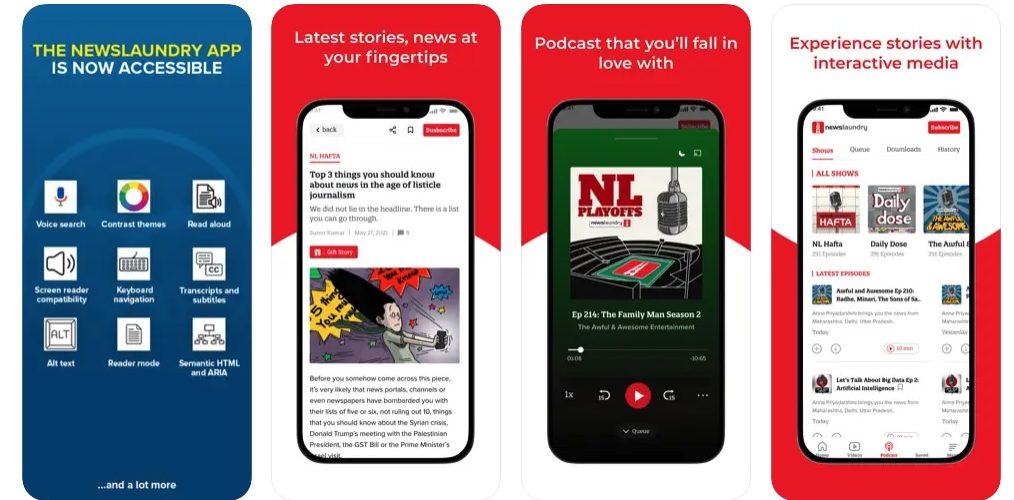
Newsletter
Newsletter
In the face of declining audiences, publishers are finding opportunities to earn higher returns from communities, their most engaged audiences.
10th November 2023

In the Pugpig weekly media bulletin, Pugpig’s consulting services director Kevin Anderson and digital growth consultant James Kember distill some of the best strategies and tactics that are driving growth in audiences, revenue and innovation at media businesses around the world.
If you want to know more about how we are working with publishers like you, get in touch at info@pugpig.com.
Communities were the “top opportunity for publishers” in 2023, Digiday said in October of last year. Their reasoning was that Americans had developed a distrust and distaste of social media communities, with 64% viewing them as unhealthy. As Charlie Warzel wrote in the Atlantic, the act of reading news on social media became known as “doomscrolling” during the pandemic. That created a massive gap in the market. Users want more engagement, with 72% of those surveyed by OpenWeb saying that content creators “should host communities”, Digiday highlighted.
Publishers were uniquely well positioned to take advantage of this; all they needed to do was “foster healthy conversations”, Digiday said. Positive interactions, which were lacking on social media, should encourage new users to engage and keep existing users coming back. In turn, this would lead to revenue from an expanded range of sources, not just subscriptions but new membership packages, events and higher advertising yields.
Publishers have not only taken note but have moved to make community core to their strategy. Kenya Hunt, Editor in Chief of Elle UK, explained to the Press Gazette why the magazine was shifting from subscriptions to membership, the Elle Collective, a fashion and beauty membership programme. Effectively an expansion of Elle’s current offering, membership to the Collective costs £149 a year and includes an app and print magazine subscription, a weekly newsletter, member-only content, offers and events. It’s a big financial step up from a subscription, which costs £39.99, but it leans into the ideas of community and also that people are willing to pay more for experiences. More than 3 in 4 millennials would rather spend money on an experience than a physical good, according to research by Eventbrite. The same survey also said that almost three-quarters would like to increase their spending on experiences.
The membership programme was designed to give “access to the daily joys that we experience every day as an Elle editor”, noted Kenya. Elle magazine’s social status gives them access to be amongst the first to try beauty products, attend events and engage with leaders, “women who are sitting at the centre of fashion, beauty and culture”. Their membership programme aimed to share this experience with their most loyal audience.
For Kenya, one of the issues that Elle has faced is that the fashion industry in general is disconnected from its audience. She leaned into her own experience growing up in Virginia, where the world of fashion seemed glamourous but insular. Fashion journalism was created in the image of the industry, both highly visible to the wider public and extremely exclusive, in an excluding way. Elle has been giving their readers a glimpse behind the curtain for years and is now exploring if this exclusivity is a product that can be bottled and sold.
The addition of the membership model comes against a familiar economic backdrop for an established consumer media brand. Elle UK’s overall circulation figures are down by around a third from 2019 and whilst the number of paid subscriptions has crept up, newsstand sales are down and less than 1 in 4 copies are “actively purchased”. Publishers are finding that they need to find ways to earn more from a smaller number of subscribers.
In many ways, the strategy returns to one of the early internet creator models: Kevin Kelly’s 1000 true fans. In 2008, Kelly challenged the mass media business model by saying that a creator didn’t need to reach millions of people or even hundreds of thousands to be successful. Instead, a thousand (or a few thousand) true fans willing to pay $100 would be enough “to make a living as a craftsperson, photographer, musician, designer, author, animator, app maker, entrepreneur, or inventor”. Kevin said that peer-to-peer communication, whether newsletters or WhatsApp Channels, plus payment systems allows anyone anywhere to connect with and sell to anyone anywhere. The key point is that this is a direct relationship. Even in the original essay, Kevin thought that if you could earn more from each fan, you would need fewer of them. Elle UK doesn’t need to sell as many £149 memberships to make its Collective make sense.
More publishers are exploring opportunities in the “passion economy”. French publisher 20 Mint has created NFTs to help fund the printing of 800,000 copies of a paper magazine dedicated to Web3. Appealing to typewriter enthusiasts, they’ve so far sold 792 NFTs and have also received contributions in the form of articles, illustrations and visual content. 20 Mint’s approach was driven by a group of enthusiasts who enjoyed forming a community and wanted to educate others. Although their objectives are different, they have the same overall approach as Elle. They know they have a small number of highly engaged users who, if they can build the right framework, will sustain their publication.
The benefits of building a community membership model are simple. It allows for a publisher to leverage the small but vitally important segment of users who are most engaged. It sounds easy, but getting it right is not always straightforward. And there is the risk that you could damage your relationship with your most valuable audience. Therefore, it’s important to ensure that your proposition messaging is clear, the value exchange is well-defined and you’re focusing on quality, not quantity.
Create clear messaging: Why do users want to sign up?
Back in September, we looked at the approach that DC Thomson had taken to build a community across three of their publications. Each title had a unique use case but its messaging and proposition were clear and well-defined. For their regional titles the focus was locality, for the Stylist it was advocacy, whilst Beano promoted itself as a resource for learning. This allowed DC Thomson to form communities around a clear objective which could be tied tightly to the brand and easily explained.
Define the value exchange: What do they get from it?
Elle and 20 Mint have both built communities, but what they offer their users, and what their users offer them, is very different. Elle is providing access to the fashion world in exchange for a membership fee, whereas 20 Mint is selling one-off tokens but looking to encourage their members to maintain its relationship with them by providing content and material in an informal exchange. For both publications, the reason for joining is clear and there’s an understanding of what being a member means. Moreover, especially in the case of Elle, it is a clear step up from a typical paid subscriber. Also, in both cases the benefits are optional, meaning that members can pick and choose what they’re interested in. When establishing a community it is vital to understand what your audience values and focus on that. Ask them if necessary. And prioritise both the benefits the community brings to you and the value you can provide to your community.
Focus on quality over quantity.
All types of communities and memberships will, by their nature, primarily appeal to a subset of your overall audience. It is also important to remember that subscriptions are transactional, while communities and membership are relationships. Therefore, it is important to focus on building quality engagements with current readers rather than obtaining a large reach. Segment your audience by engagement and look for opportunities that can capitalise on their current activities and interests. Generally, look for organic growth and by ensuring that the community has a clear purpose you will see expansion over time. This isn’t to say that you should avoid marketing spend, especially in the early stages, but the aim should be to attract users who are already engaged with your brand and deepen that relationship rather than build a new product to deliver increased reach.
As DC Thomson demonstrated, membership and communities are not limited to niche technology or lifestyle brands. Mass market news publications are also in a strong position to build membership products. This is a logical extension of the development of audience-led media strategies over the past decade. First came subscriptions to monetise audiences, and then publishers added a registration step to the journey as a way to establish relationships with more lightly engaged users. Now, community and membership strategies add a tier that extends from subscription in the other direction to more deeply engaged users.
At Pugpig Consulting we work with a range of publishers including news brands, consumer media and membership organisations. We see first hand the varied approaches that companies can take to build engagement and are increasingly seeing tactics that once would have been appropriate to only a membership organisation applied in news and consumer media – and vice versa. Ultimately the aim is always the same: to build habit and loyalty.
Here are some of the most important headlines about the business of news and publishing as well as strategies and tactics in product management, analytics and audience engagement.

Newsletter

Newsletter

Newsletter

Newsletter

Newsletter